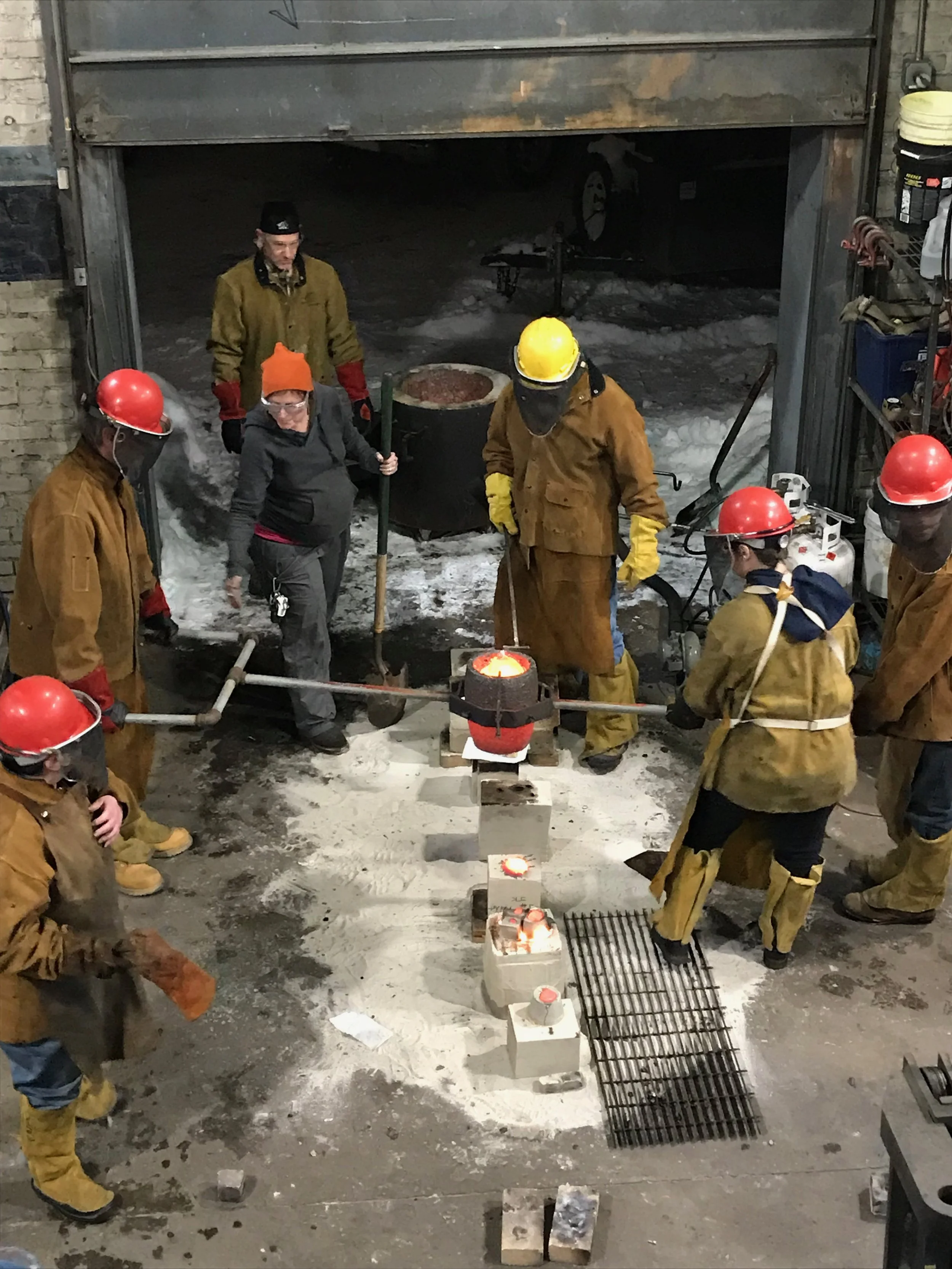Teach with us
Are you an experienced fire artist? CAFAC is always looking for more diverse instructors to teach new and existing classes! Being an instructor has a number of benefits including competitive pay, free classes, unlimited studio access through SPARC, paid fabrication opportunities, and more! Download the Teaching Artist Compensation & Benefits PDF to learn more.
Our classes take a few different forms. One-day workshops, weekend intensives, and eight-week courses are the most common. We accept proposals year-round, but there are deadlines for inclusion in a specific quarterly schedule. Read on for information about proposing a new course, and visit the online course proposal form to submit once you’re ready!
As part of our commitment to diversity, equity, and representation in the fire arts, inquiries are particularly welcome from members of underrepresented communities.
Course Proposals
Long-time instructors may be comfortable writing compelling descriptions, attention-grabbing titles, and detailed materials lists, but for new instructors that can be daunting. If you’re struggling with any part of the course proposal process, feel free to contact Becca Cerra, our Education & Access Coordinator at becca.cerra@cafac.org. Addressing barriers to teaching is a key part of our commitment to diversifying instructors at CAFAC.
Course development can be collaborative, too. If you have a loose idea for a class, reach out and we’ll work together to determine the scope, number of sessions, and materials needed.
Creating a good proposal
Some questions to consider while you come up with a course description:
What is your course about?
Is there a specific group of students that want/need your course, or is it intended for a general audience?
Is there any prerequisite knowledge that will enhance the student’s learning experience?
What concepts, techniques, or skills will be taught?
After your course, what will students be able to do?
After you’ve considered these, it’s time to organize the course content—lessons, demonstrations, in-class projects and “homework”—into a daily lesson plan. This will help us make sure that your course content fits in well with our other offerings in that department. This won’t be published publicly, but it will help ensure that your course goals will be met and serves as the foundation for a syllabus.
Description and title
A well-written description is clear, concise, and hooks prospective students with information about techniques they’ll learn and projects they’ll complete. Our course descriptions are generally around 125 words, and should be written in second person (e.g. “In this course, you will learn…”) or third person plural (e.g. “We will practice techniques…”).
Titles will usually come at the end of a finished course description, and can have a significant impact on student interest. Brevity is a good starting point (e.g. Blacksmithing Basics I), but more creativity can be nice (e.g. Jewelry Project Shop: Get Twisted).
Instructor Bio
Your biography will appear with your course description, and should be two or three sentences about any relevant experience and education, current artistic activities, and relevant awards.
This activity is made possible by the voters of Minnesota through a Minnesota State Arts Board Operating Support grant, thanks to a legislative appropriation from the arts and cultural heritage fund.




